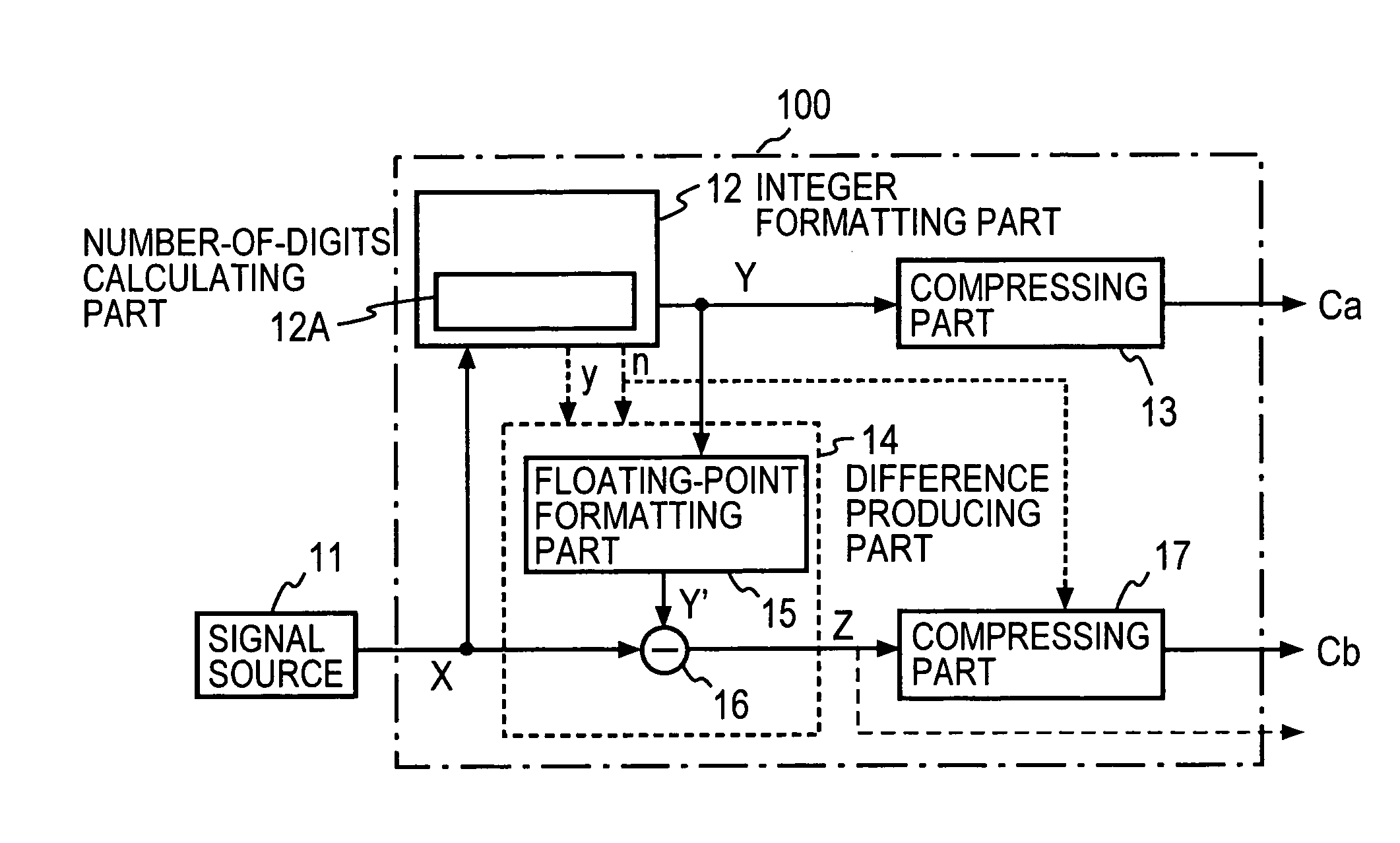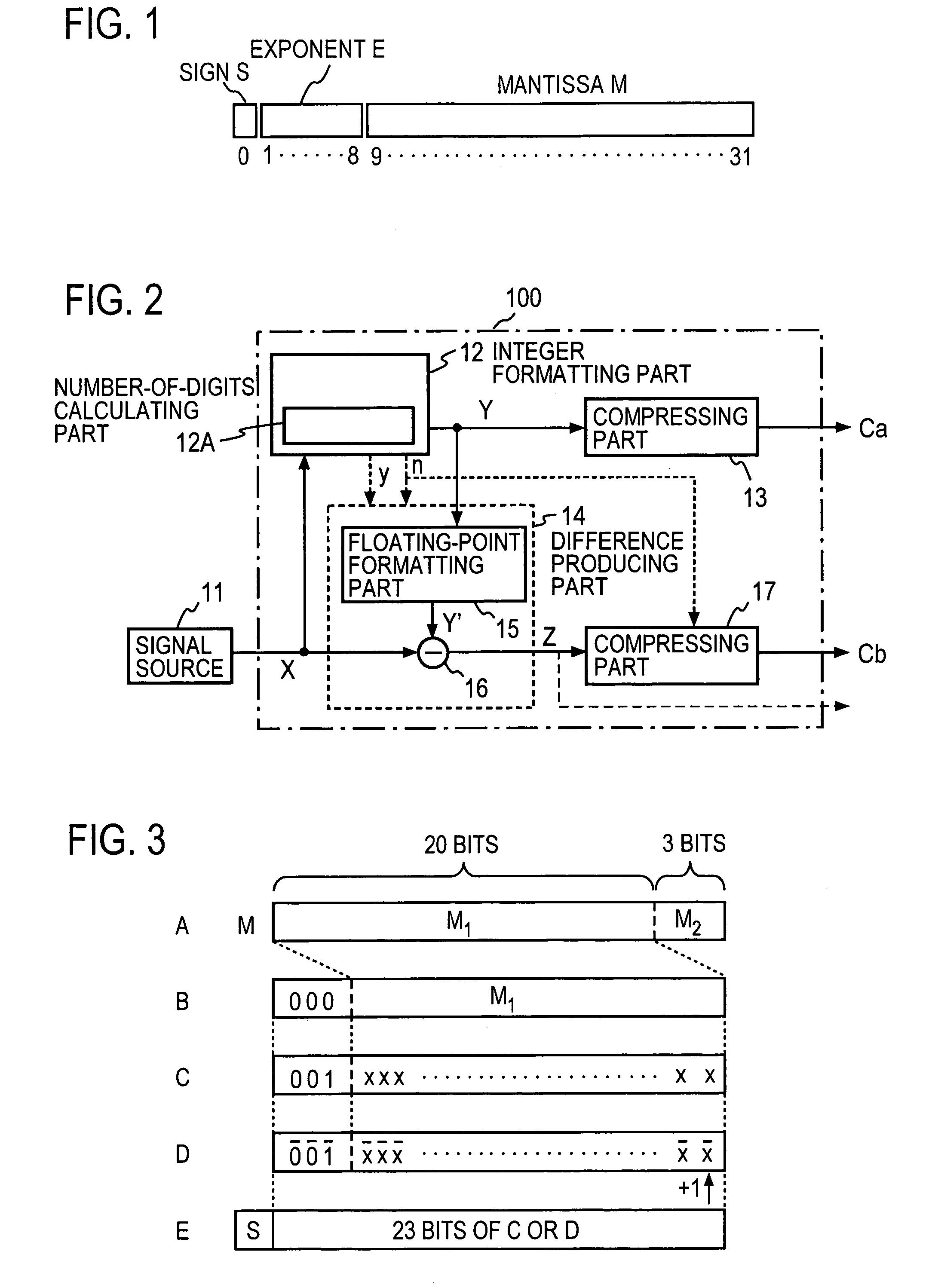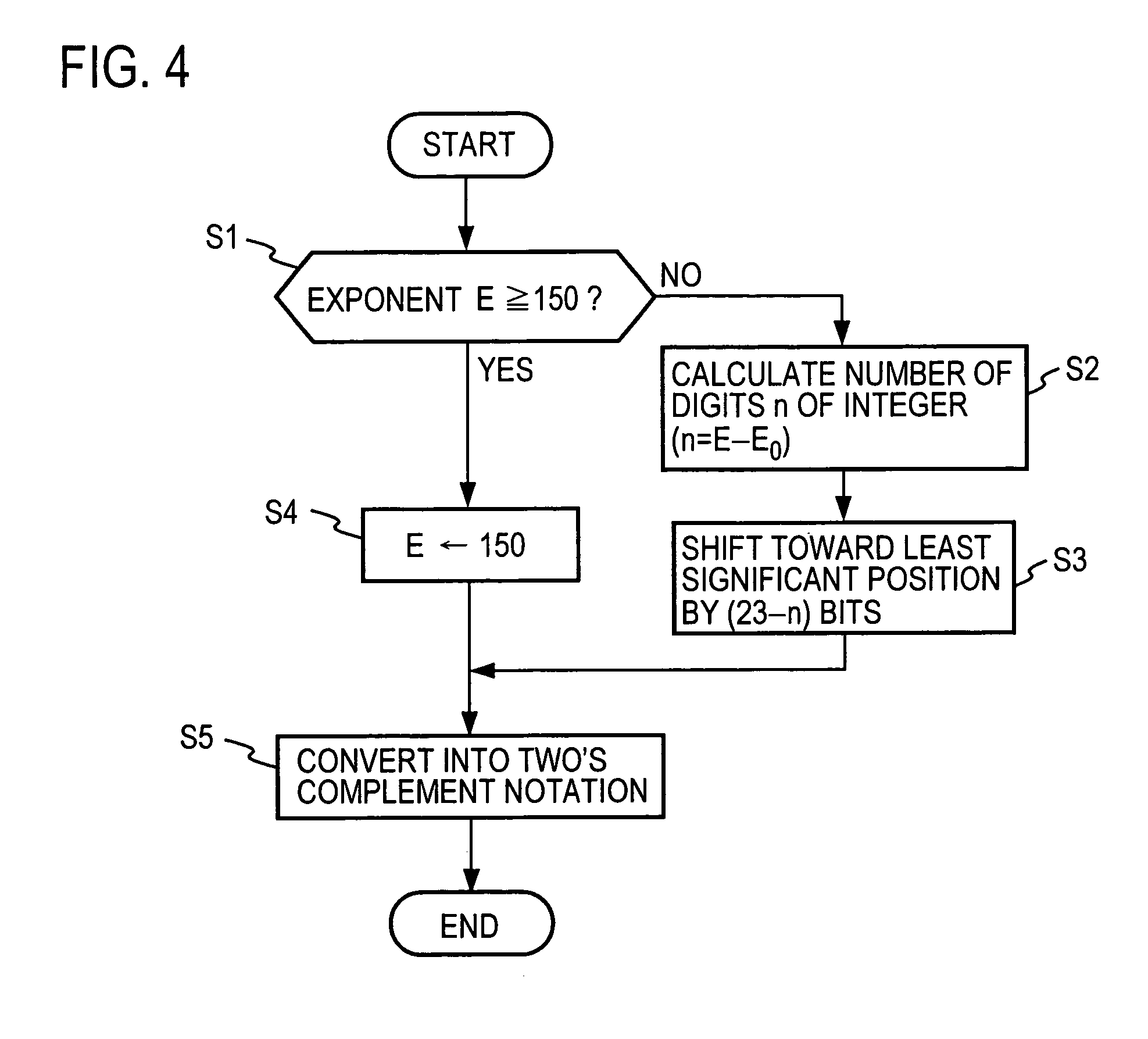Floating-point type digital signal reversible encoding method, decoding method, apparatuses therefor, and programs therefor
a digital signal and reversible encoding technology, applied in the direction of electrical equipment, code conversion, etc., can solve the problems that entropy compression coding or the like cannot be expected to provide cannot achieve a high compression ratio, so as to achieve efficient compression and increase the scale of processing equipment and program
- Summary
- Abstract
- Description
- Claims
- Application Information
AI Technical Summary
Benefits of technology
Problems solved by technology
Method used
Image
Examples
first embodiment
[0047]FIG. 2 shows a functional configuration of a coder according to an embodiment of the present invention. A coder 100 according to this embodiment comprises an integer formatting part 12, a compressing part 13, a difference producing part 14, and a compressing part 17. The integer formatting part 12 has a number-of-digits calculating part 12A, and the difference producing part 14 comprises a floating-point formatting part 15 and a subtraction part 16. For example, a signal source 11 outputs a music signal sample sequence as a sequence of input digital signal samples X (simply referred to also as input signal samples X, hereinafter) in the 32-bit floating-point format. Each of the digital signal samples X is produced by performing a processing, such as transformation, amplitude adjustment, effect addition and mixing, on a raw signal recorded in the 24-bit integer format and converting the resulting signal having a fractional part as a result of the processing into the floating-po...
second embodiment
[0079]In the above description of the embodiment shown in FIG. 2, the exceptional processing is performed on a sample whose exponent E holds E ≧150. However, as briefly described earlier, digit adjustment may be performed on a frame basis to avoid the situation of E≧150. In the following, an embodiment in which digit adjustment is performed so that the maximum value of the exponents E of the samples in a frame falls within a range of 150>E≧150−K will be described with reference to FIG. 9.
[0080]FIG. 9 is a functional diagram of a coder 100 according to a second embodiment of the present invention, in which the parts corresponding to those in FIG. 2 are denoted by the same reference numerals as in FIG. 2. According to the second embodiment, a sample sequence dividing part 31 divides a sequence of digital signal samples X in the floating-point format into blocks of a predetermined number of samples or into frames, and a digit adjusting part 32 performs digit adjustment on the exponent ...
modified embodiment
[0101]As shown in FIG. 12, in which the parts corresponding to those in FIG. 9 are denoted by the same reference numerals, without performing the inverse digit adjustment of the digital signal sample Y, the digital signal sample Y in the integer format may be converted into a digital signal sample in the floating-point format by the floating-point formatting part 15, and the difference between the resulting digital signal sample in the floating-point format and the digital signal sample in the floating-point format having been adjusted in digit by the digit adjusting part 32 be determined, thereby producing the difference signal Z in the floating-point format. That is, as far as the difference producing part 14 determines, in the floating-point format, the difference signal between the original digital signal sample X in the floating-point format and the digital signal sample Y in the integer format, any of the arrangements shown in FIGS. 2, 9 and 12 can be used.
[0102]Associated wit...
PUM
 Login to View More
Login to View More Abstract
Description
Claims
Application Information
 Login to View More
Login to View More - R&D
- Intellectual Property
- Life Sciences
- Materials
- Tech Scout
- Unparalleled Data Quality
- Higher Quality Content
- 60% Fewer Hallucinations
Browse by: Latest US Patents, China's latest patents, Technical Efficacy Thesaurus, Application Domain, Technology Topic, Popular Technical Reports.
© 2025 PatSnap. All rights reserved.Legal|Privacy policy|Modern Slavery Act Transparency Statement|Sitemap|About US| Contact US: help@patsnap.com



